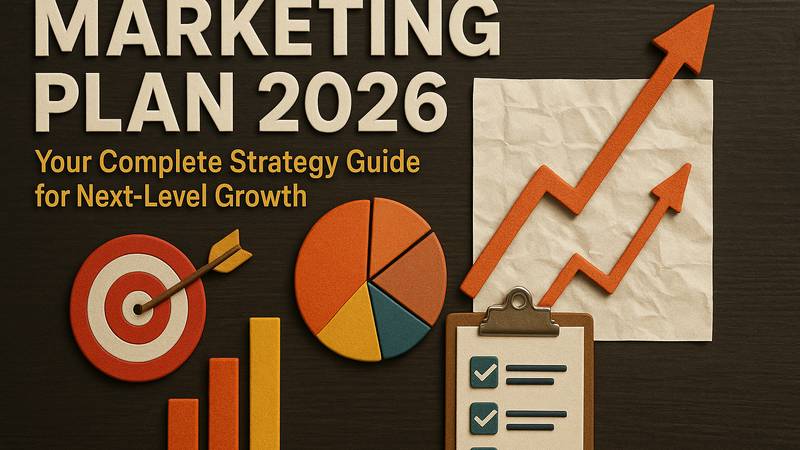
Master Email Marketing: Tips, Tools, and Strategies for Success
Email marketing is crucial for reaching your audience, boosting sales, and fostering customer loyalty. This guide offers you practical tips, the best tools, and effective strategies to enhance your email marketing campaigns. Learn how to get the best ROI from your emails and keep your audience engaged.
Key Takeaways
-
Email marketing offers one of the highest returns on investment, with an average of $42 generated for every dollar spent.
-
Building and segmenting a quality email list is crucial for effective engagement and fostering deep customer connections.
-
Utilizing automation tools and analytics can streamline email campaigns, enhance personalization, and optimize performance for better results.
Understanding Email Marketing

Email marketing serves as a direct marketing channel. It enables businesses to communicate products, sales, and updates to their customers. It serves both promotional and educational purposes, making it a versatile tool in any marketer’s arsenal. Email marketing is a vital component of any digital marketing strategy, crucial for generating revenue and driving conversions. It stands out as one of the most effective channels, offering a direct line to your audience and fostering brand loyalty.
Key elements of an effective email marketing campaign include a robust email list, a reliable email service provider (ESP), and clear goals that align with your broader marketing strategy. Email marketing goals should align with your company’s broader marketing objectives and key performance indicators (KPIs). Whether the aim is to increase sales, boost website traffic, or nurture leads, a well-defined strategy lays the foundation for successful campaigns.
Moreover, email marketing tools play a crucial role in managing campaigns and tracking performance. These tools allow you to design, personalize, and optimize your emails to achieve maximum impact. Effective use of these tools can enhance email marketing performance, ensuring messages reach the intended audience.
When integrated with other marketing channels, email marketing becomes even more powerful. It supports your overall digital marketing strategy by driving traffic to your website, encouraging social media engagement, and providing valuable insights through analytics. Email marketing remains a cornerstone of successful digital efforts, enabling businesses to connect with their audience on a personal level.
Key Benefits of Email Marketing

Email marketing delivers the highest return on investment among online marketing channels, generating an average of $42 for every dollar spent. It’s no wonder that 59% of marketers cite email as their primary ROI source. One of the standout features of email marketing campaigns is their ability to enhance sales significantly. For instance, segmentation in email campaigns can lead to a revenue boost of up to 760%.
One of the major advantages of email marketing is that marketers maintain ownership of their email lists, allowing for direct interaction with subscribers regardless of changes in social media platforms or algorithms. This ownership enables timely email campaigns that can be rapidly created and dispatched, ensuring timely audience engagement. Additionally, personalized content tailored to audience needs fosters deeper customer connections.
Email marketing is also an efficient method for increasing leads through nurturing and conversion strategies. Targeted, relevant content helps guide potential customers more effectively through the sales funnel. Conversion rates, a key email marketing metric, reflect how well your emails encourage recipients to take desired actions, such as making a purchase or signing up for a webinar.
Furthermore, email marketing tools provide valuable insights into email marketing performance. Tracking engagement metrics like open rates, click-through rates, and conversion rates allows marketers to fine-tune strategies and improve future campaigns. This data-driven approach ensures that your email marketing efforts are continually optimized for maximum effectiveness.
Types of Email Campaigns
Different types of email campaigns serve specific goals to enhance customer engagement and sales. Whether you’re looking to promote a product, share valuable information, or confirm a transaction, there’s an email campaign designed for the task.
Event invitation emails, for instance, aim to increase awareness and encourage attendance. Segmenting your email list allows for more relevant, targeted emails, enhancing brand awareness.
Promotional Emails
The purpose of promotional emails is to drive a direct response from customers. These emails typically contain a product or discount offer and a direct call to action. Promotional emails can promote special offers, new product releases, gated content, or even the brand itself. They are designed to generate immediate interest and action, making them a powerful tool in any email marketing strategy.
A critical component of promotional emails is the call-to-action (CTA), which should be clear and represent a specific action for the reader to take. Whether it’s “Shop Now,” “Download,” or “Sign Up,” the CTA should be compelling and highlight what customers will gain from taking that action. Additionally, creating a sense of urgency within these emails can significantly encourage customer action, such as limited-time offers or countdown timers.
Visual elements also play a crucial role in promotional emails. Attractive images and graphics can showcase products and offers in a way that grabs attention and makes the email more engaging. Combining compelling visuals with a strong CTA creates promotional emails that capture interest and drive conversions.
Informational Emails
Informational emails, particularly newsletters, are essential for keeping customers updated and engaged. A newsletter is a regularly distributed email campaign that focuses on a main topic, such as company news, industry updates, or valuable insights. The primary purpose of these emails is to share news and updates related to the business, allowing you to build relationships with customers by providing valuable content beyond promotions.
Newsletters can include a variety of content, such as insights, tips, company announcements, and highlights of new offerings or articles. Typically, they are sent out on a regular basis, such as weekly, bi-weekly, or monthly, to keep the audience engaged without overwhelming them. The main goal is to maintain contact with existing customers and drive them back to your website, fostering ongoing engagement and retention.
Transactional Emails
Transactional emails play a vital role in confirming customer actions and improving overall satisfaction. These emails typically include order confirmations, shipping notifications, password resets, and other important updates that customers expect after taking specific actions on your website. Providing timely and accurate information through transactional emails can significantly enhance customer trust and satisfaction.
Automated transactional emails can further enhance customer trust during the purchasing process by providing instant confirmation of their actions. These emails not only reassure customers that their orders have been received and are being processed but also offer opportunities to cross-sell or upsell related products and services. Automation ensures these critical communications are always timely and accurate.
Building Your Email List

Building an email marketing contact list is essential to have opt-in subscribers who have given permission to receive your communications. This process involves capturing email addresses through various methods and ensuring that you’re targeting an interested and engaged audience.
Effective strategies involve offering prominent subscribe opportunities with valuable incentives like special discounts or exclusive content. Visual calls to action and opt-in forms can significantly improve newsletter sign-up conversions.
Understanding that a significant portion of your audience, such as 73% of millennials, prefers email communications reinforces the importance of building a strong email list.
Organic List Building
Organic list building focuses on attracting subscribers through natural, non-intrusive methods. Email signup forms should be strategically placed in highly visible areas, such as the uppermost portion of the sidebar, and can also function as pop-ups to capture attention. Using timed pop-ups that appear based on user behavior, such as reading an article or scrolling a certain percentage of the page, can effectively capture email addresses without disrupting the user experience.
Offering incentives, such as special discounts or exclusive content, is a powerful way to encourage email subscribers to join your email list. Personalized calls-to-action can further increase conversion rates for email sign-ups. Additionally, obtaining subscriber consent is crucial for compliance with data protection regulations and for ensuring that your audience is genuinely interested in receiving your emails.
Experimenting with the timing and messaging of pop-up displays, such as using exit-intent pop-ups, can significantly improve user engagement. For instance, showing a pop-up when a user is about to leave the site has been shown to increase conversions by 46%. Carefully considering user experience and testing different strategies can effectively grow your email list organically.
Importing Existing Contacts
Importing existing contacts into your email marketing system is another way to build your list, but it’s crucial to ensure you have adequate permission to email these subscribers. The process can involve either manual uploads from an Excel file or automatic synchronization from CRM systems and other tools.
Remember, subscribers have the right to withdraw consent and opt-out of future marketing emails at any time, so it’s important to manage these contacts responsibly.
Crafting Effective Email Content

Compelling email content is vital for engaging subscribers and enhancing campaign performance. Effective email copy offers value, aligns with audience interests, and reflects the brand tone. Structuring emails for easy reading, such as using the inverted pyramid model, can grab attention and achieve high click-through rates. The structure should include a succinct headline, supporting information, visuals, and a prominent call to action.
With the average adult attention span for emails at just eight seconds, clarity is key. Following the Pareto Principle, the recommended content mix for email campaigns is 80% valuable information and 20% promotions. Email marketing tools also enable businesses to create targeted messages that resonate with specific customer segments.
Testing different landing pages can further enhance conversion rates from email campaigns. Additionally, email marketing software can effectively manage contacts, design emails, and track recipient engagement.
Writing Engaging Subject Lines
Subject lines determine whether an email is opened or ignored, making them crucial in any email marketing strategy. Along with subject lines, email preheader text adds context and can boost open rates. Subject lines should aim to create intrigue or a desire to open the email, capturing the recipient’s attention from the get-go.
Personalizing subject lines can lead to a 26% increase in open rates, making personalization a key tactic. The recommended subject line length for mobile marketing is between 17-24 characters, or 3 to 5 words, to ensure it displays properly on mobile devices. Aligning the subject line closely with the email content is also crucial to set clear expectations for readers and prevent disappointment.
Utilizing email tools like Brevo can assist in crafting effective subject lines. If no preview text is set, the email client will use the first line of text, which might not be as compelling. Additionally, AI can help develop effective subject lines, enhancing engagement and ensuring that your emails get noticed.
Personalization and Segmentation
Personalized email campaigns can boost open rates by up to 26% and significantly enhance revenue generation. Personalization boosts open, click-through, and conversion rates, making it a powerful email marketing strategy. However, personalization remains a challenge for 36% of marketers. Tactics for personalization include using first names, considering time zones, and recognizing milestones.
Netflix, for example, targets users with tailored content based on their engagement, showcasing the potential of personalized email campaigns. Automated message delivery based on user behavior or segmentation enhances email relevance and timeliness.
Segmenting email lists based on demographics, behavior, and preferences can lead to higher engagement rates. Typical information used for segmenting contact lists includes demographic data like age and location. Start segmenting subscribers during sign-up by asking about their email content and frequency preferences. Utilizing customer data can significantly enhance the relevance of email messages and increase engagement rates.
Visual Elements and Design
Incorporating appealing visuals in emails can notably improve reader engagement and retention of the information. Visuals are recalled better than text, making them a powerful tool for enhancing the impact of your emails. People follow visual instructions 32% better than written instructions, highlighting the importance of using images effectively.
When designing a marketing email, it is important to embody your brand and keep it simple. Avoiding walls or blocks of text can enhance engagement, making your emails more reader-friendly. A key feature of responsive email templates is that content stacks on top of each other on mobile devices, ensuring a seamless experience across different screens.
Timing and Frequency of Emails
The timing and frequency of your emails can significantly impact their effectiveness. Sending emails at optimal times and managing the frequency can enhance engagement and reduce the likelihood of email fatigue. By testing different strategies and using insights from your audience’s behavior, you can optimize your email marketing campaigns for better results.
Optimal Send Times
Emails sent on Tuesdays and Thursdays tend to generate the highest open rates. The most effective times for sending marketing emails are typically between 10 AM and 3 PM, when recipients are more likely to check their inboxes. However, different industries may have specific optimal times; for instance, SaaS emails perform best around 2 PM. The timing of your emails can significantly impact engagement rates, making it essential to choose send times wisely.
By experimenting with different send times and analyzing the results, you can determine the optimal times for your specific audience. Tools that allow for A/B testing can be particularly useful in identifying the best times to send your emails, ensuring that they are opened and read by as many recipients as possible.
Managing Email Frequency
To maintain engagement, it’s crucial to align email frequency with subscriber preferences. Finding the right balance can significantly influence both revenue and subscriber retention. Overloading subscribers with too many emails can lead to higher unsubscribe rates, while too few emails can result in missed opportunities for engagement.
Regularly reviewing and adjusting the frequency based on subscriber feedback and engagement metrics is essential. By understanding your audience’s preferences and behaviors, you can tailor your email frequency to maximize engagement and maintain a positive relationship with your subscribers.
Tools and Services for Email Marketing
Many email marketing tools allow users to create, personalize, and optimize marketing emails. These tools offer a range of features, from customizable templates to automation and analytics, making it easier to manage and enhance your email marketing campaigns. By leveraging this email marketing tool, businesses can streamline their email marketing efforts and achieve better results through most email marketing services.
Email Service Providers (ESPs)
Email service providers (ESPs) are software used to send and manage email marketing campaigns. Brevo, for example, offers over 40 newsletter templates that can be customized for various marketing needs. With free email marketing tools, you can use customizable templates for newsletters, events, and more, helping you create professional-looking emails with ease.
Using AI-generated subject lines and email copy can help boost email opens, ensuring your messages reach the intended audience. Existing contacts can be imported via manual uploads or by syncing with other tools like CRMs.
ESPs are essential for sending and managing campaigns, offering features that enhance deliverability and ensure messages reach intended inboxes. They also help meet security checks related to sender domain security.
Automation Tools
Automation tools handle most of the heavy lifting for personalized campaigns, making them essential in modern email marketing. Utilizing marketing automation can significantly enhance the efficiency of email campaigns as businesses grow. These tools facilitate timely communication, allowing for personalized messages triggered by user actions without manual effort.
By setting up automated workflows, businesses can ensure that their emails are sent at the right time based on customer behavior, increasing the chances of engagement and conversion. Automation tools also help in managing follow-ups and nurturing leads, making the entire email marketing process more efficient and effective.
Analytics and Reporting Tools
Analytics tools are vital for measuring key email metrics, enabling marketers to make informed decisions. Email marketing analytics provide insights that help refine strategies and improve audience engagement. These tools provide detailed reports on email performance metrics, such as open rates, click-through rates, and conversion rates, which are essential for optimizing future marketing campaigns.
Integrating Google Analytics with email campaigns can provide even deeper insights, such as details of visits, time spent, and pages visited from email campaigns. This data-driven approach allows businesses to continuously improve their email marketing efforts and achieve better results.
Best Practices for Email Deliverability
Email deliverability refers to how successfully an email reaches the inbox. It focuses on ensuring that the email is delivered rather than getting lost or filtered out. Ensuring your emails reach the inbox is crucial for effective communication and engagement with your audience. When email deliverability is compromised, emails may land in spam folders or the sender’s IP could be blocked, severely impacting your email marketing performance.
Double Opt-In
Double opt-in is a process requiring subscribers to confirm their intention to receive emails, ensuring consent is genuinely obtained. This process improves email deliverability and serves as proof of subscriber consent. Using double opt-in ensures that subscribers are genuinely interested in receiving your emails, enhancing engagement and reducing the risk of spam complaints.
The double opt-in process typically involves sending a confirmation email to new subscribers, asking them to verify their email address by clicking a link. This additional step helps in maintaining a clean and engaged email list, which is crucial for the success of your email marketing campaigns.
List Management
It is important to clean your email list regularly. This helps to maintain optimal deliverability and increase engagement rates. Consider reviewing subscriber data frequently and sending reactivation campaigns for those who haven’t engaged within six months. If there’s still no engagement after reactivation efforts, it’s recommended to delete those subscribers from your list.
When subscribers show low engagement scores, cleaning your list by removing or segmenting inactive subscribers is advisable. Maintaining an accurate email list requires regularly removing invalid or bounced email addresses. This practice ensures that your emails reach engaged recipients, improving overall email deliverability and campaign performance.
Avoiding Spam Traps
To prevent subscribers from marking emails as spam, it is essential to make the unsubscription process easy and straightforward. Spam traps are fake email addresses used by Internet Service Providers (ISPs) to identify unwanted emails. Falling into these traps can severely damage your sender reputation.
If a subscriber finds it difficult to unsubscribe, they may choose to mark your email as spam instead, which negatively impacts your email deliverability. Understanding the nuances of spam traps and effectively managing subscribers are crucial to maintaining good deliverability in your email campaigns.
Measuring Success with Email Marketing Metrics

Key performance indicators such as click-through and conversion rates are essential for assessing the effectiveness of email marketing. Effective email marketing metrics include engagement rates and subscriber retention. Businesses can track open rates, click-through rates, and conversion rates to measure the performance of email campaigns.
Triggered emails, which are automatically sent based on user actions, can outperform regular emails by achieving open rates up to 50%. Over half of companies leverage trigger-based emails, which can contribute up to 20% of total email marketing revenue.
Many email marketing platforms provide A/B testing options to optimize campaign performance based on data. A good unsubscribe rate for email marketing should ideally be 0.5% or lower. Creating a straightforward unsubscribe process can help reduce spam complaints and improve deliverability.
Open Rates
Open rates measure the percentage of recipients who open an email, reflecting engagement and the effectiveness of the subject line. High open rates indicate that recipients are interested in the content, leading to better overall email marketing performance. By understanding and implementing strategies like personalized subject lines, marketers can enhance open rates and engagement. Personalization in subject lines can significantly boost open rates, making it a critical factor in optimizing email performance.
Monitoring open rates provides valuable insights into how well your subject lines and email previews are performing. If open rates are low, consider A/B testing different subject lines and preheader texts to see what resonates best with your audience. This iterative process helps in refining your approach and increasing the likelihood that your emails will be opened and read.
Click-Through Rates
Click-through rates provide insight into recipient engagement with content and the effectiveness of call-to-action strategies. Using clear and actionable language in calls to action increases click-through rates. To improve engagement metrics like open rates and click-through rates, A/B testing can be utilized in email campaigns.
Tracking click-through rates helps you understand which links and content are most appealing to your audience. By analyzing these metrics, you can optimize your email content and CTAs to better align with your subscribers’ interests and behaviors.
This data-driven approach ensures that your emails are not only opened but also engaged with, driving more traffic to your website and increasing conversions.
Conversion Rates
Conversion rate optimization is crucial as it interacts with other facets of digital marketing, contributing to overall effectiveness. Conversion rate optimization involves five key steps which can significantly enhance campaign performance and boost sales.
By focusing on improving conversion rates, businesses can ensure that their email marketing efforts are driving tangible results and contributing to their overall marketing goals.
Scaling Your Email Marketing Efforts
Scaling your email marketing efforts involves adopting advanced techniques like list segmentation and automation to reach a larger audience more effectively. Key strategies for segmentation include personalizing content and optimizing send times based on audience behavior.
After sending emails, automation can significantly enhance efficiency by managing follow-ups and nurturing leads. As more businesses adopt automation tools, it’s projected that 48% will focus on enhancing their marketing automation next year.
Advanced Segmentation
Advanced segmentation involves dividing your email list into more specific categories to deliver tailored messages based on user behavior and preferences. Effective scaling of email marketing requires advanced techniques like list segmentation and automation. Segmentation aids in targeting specific audiences, enhancing engagement and reducing the chance of irrelevant emails being sent. Granular segmentation allows for more personalized messaging that aligns with customer expectations.
Advanced segmentation allows for highly targeted campaigns that resonate with different subscriber groups. This approach not only improves engagement rates but also increases the likelihood of conversions, making it a vital strategy for scaling your email marketing efforts.
Enhanced Automation
Enhanced automation allows for setting up complex workflows that send targeted emails based on customer actions or inactions. Sophisticated automation workflows help to nurture leads by delivering relevant content at key stages of the customer journey. Automation can improve campaign performance through targeted messaging based on user interactions.
Enhanced automation ensures email campaigns are always timely and relevant. This not only saves time and resources but also enhances the overall effectiveness of email marketing efforts, driving better results and higher ROI.
Legal Considerations and Compliance
An effective email list needs to be permission-based, ensuring that all subscribers have opted in to receive communications. The CAN-SPAM Act regulates all commercial emails, requiring compliance for both bulk and individual messages.
Violating the CAN-SPAM Act can lead to penalties of up to $51,744 per email.
GDPR and CAN-SPAM Act
The GDPR mandates that businesses obtain explicit consent from customers before sending marketing emails, while the CAN-SPAM Act regulates email marketing practices in the U.S. Using ESPs helps ensure compliance with regulations like GDPR when conducting email marketing. Under the CAN-SPAM Act, marketers must provide a clear opt-out mechanism in their emails. The law mandates that senders must not use misleading information in the header of their emails. Strong compliance with GDPR and CAN-SPAM regulations enhances trust and credibility in email marketing.
Understanding these regulations is crucial for any business engaging in email marketing. Adhering to these laws protects businesses from legal repercussions and builds trust with subscribers, ensuring a compliant email marketing strategy.
Subscriber Consent
Obtaining subscriber consent is mandatory for compliance under both GDPR and the CAN-SPAM Act. Before importing contacts, it’s crucial to verify that you have consent from these individuals to send them marketing emails. Double opt-in signup forms improve email deliverability, prevent hard bounces, and verify subscriber consent.
By ensuring that all subscribers have given explicit consent, businesses can maintain a clean and engaged email list. This not only enhances email deliverability but also fosters customer loyalty, as subscribers are more likely to trust and engage with brands that respect their privacy and preferences.
Summary
In conclusion, mastering email marketing involves understanding its fundamentals, leveraging its benefits, and utilizing advanced tools and strategies to enhance performance. By building a robust email list, crafting compelling content, and optimizing timing and frequency, businesses can drive engagement and achieve outstanding results. Remember to stay compliant with legal standards and continuously measure your success to refine your strategies. With these insights, you are well-equipped to harness the power of email marketing and propel your business to new heights.
Frequently Asked Questions
What is the primary purpose of email marketing?
Email marketing primarily serves to promote products and educate customers about sales and updates, driving engagement and building relationships. It’s a powerful tool that helps businesses connect with their audience effectively!
How can I improve the open rates of my emails?
Personalizing subject lines and crafting compelling preheader text can significantly enhance your email open rates. Embrace these strategies to connect better with your audience!
What are the benefits of using automation tools in email marketing?
Using automation tools in email marketing streamlines your campaigns by enabling personalized communication and timely follow-ups, which can significantly enhance engagement and effectiveness. Embracing these tools can lead to a more efficient marketing strategy and better results!
How often should I clean my email list?
You should clean your email list regularly, ideally every few months, to ensure optimal deliverability by removing inactive or invalid addresses. Keeping a fresh list helps maintain engagement and achieve better results!
What are the legal requirements for email marketing compliance?
To ensure your email marketing is compliant, it’s essential to get explicit consent from subscribers, include a clear opt-out option, and be truthful in your communications. By following these guidelines, you’ll build trust and can focus on growing your audience!
Are you interested in finding out more? Browse the rest of our blog for other marketing tips. If you’re ready to create your first email, survey, sign-up form, or landing page then register for a free trial to get the tools you need to build powerful marketing campaigns!
© 2024, Vertical Response. All rights reserved.



